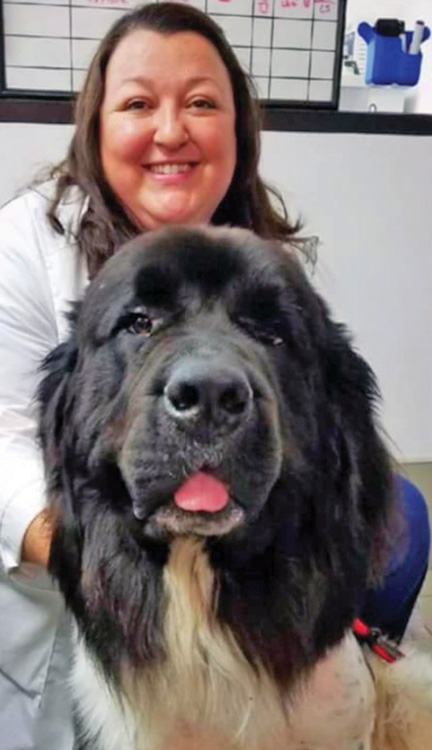Meningoencephalitis of Unknown Etiology (MUE) refers to the category of disease with a suspected immune-mediated cause, but the pathophysiology is truly unknown. These diseases may be due to a precancerous condition, an immune response secondary to a previous infection, or a delayed (T cell mediated) hypersensitivity reaction.
Four Flavors of MUE
MUE can be divided based on histopathology into granulomatous meningoencephalitis (GME), necrotizing meningoencephalitis (NME), necrotizing leukocencephalitis (NLE), or steroid-responsive meningitis-arteritis (SRMA).
GME can manifest in three clinicopathologic forms: ocular (least common), focal, and multifocal/disseminated (most common form). It can occur in both large and small breed dogs with a variable age range. The clinical signs reflect the location of the lesion and can occur anywhere in the central nervous system. Pain, seizures and cerebellovestibular dysfunction are seen most commonly.
NME has also been described as “pug dog encephalitis,” but can affect Maltese, Pekingese, Chihuahua, and other toy breed dogs. NME has also been described in medium to large breed dogs, but much less commonly. As the name suggests, the inflammation leads to a secondary necrosis. The typical signalment is a juvenile to young adult dog (median age = 18 months). Symptoms affect the cerebrum only and seizures are a very common clinical sign. Neck pain can also be seen in these patients and is likely secondary to meningeal pain.
NLE is very similar to NME, except for the signalment and lesion location. Yorkshire terriers and French bulldogs tend to be predisposed to development of NLE. NLE affects both the cerebrum and brainstem. Patients typically show evidence of multifocal brain symptoms.
SRMA is typically seen in young (less than two years old) medium to large breed dogs. Boxers, beagles, and Bernese Mountain dogs are predisposed. The most common clinical signs are severe neck pain and fever. Concurrent nonerosive immune-mediated polyarthritis (IMPA) has also been commonly reported with SRMA patients.
Diagnosis and Treatment
These immune-mediated inflammatory diseases can only be definitively diagnosed by histopathology. Antemortem testing with MRI and CSF and negative infectious disease titers can help lead to a diagnosis. Therapeutic options for all of these diseases focus on steroids and immunomodulatory medications. SRMA typically is treated with steroids alone. Steroids are initially administered at an immunosuppressive dose and then slowly tapered over a 6- to 12-month duration. Relapse is possible, but not common.
A combination of steroids and immunomodulatory medications are typically used with GME, NME, and NLE (and in relapsing SRMA cases). Various immunomodulatory medications have been reported and used in these patients, including cytosine arabinoside, mycophenolate, cyclosporine, procarbazine, lomustine, leflunomide, and azathioprine.
Individualized Therapy
When managing these patients in the primary care or specialty practice setting, it is important to monitor patients’ neurologic examination and blood work for potential drug side effects. The neurologic examination and history at reevaluation appointments will help guide therapy.
There is no “cookie cutter” approach with these patients; each pet should be treated individually and the medications adjusted based on their individual response to therapy. In our experience, if medical therapy is tapered too quickly, patients are likely to show relapse of clinical signs, necessitating an increase in immunomodulatory medication.
Myelosuppression is the most common side effect seen with the immunomodulatory medications. Therefore, blood work monitoring is strongly recommended in these patients at least every 6 months with a complete blood count and biochemistry profile.
Managing these patients on long-term immunomodulatory medications will make them prone to picking up infections. Therefore, the clients should be instructed to limit their pet’s exposure to dog parks, sick animals, etc., to try and limit exposure to infection.
Vaccination Recommendations
Routine vaccination is controversial in these patients and the literature is unclear about the true risk to benefit ratio. We recommend evaluating each patient individually when deciding to vaccinate. We typically do not recommend vaccination in most of our patients on immunomodulatory medications, as vaccination could put the patient at risk for relapse (due to stimulating the immune system) and the vaccine will likely not be effective in patients on medications aimed to suppress the immune system. Clients should be encouraged to continue their pets on monthly heartworm, flea, and tick preventative medications.
Prognoses
The prognosis for SRMA is guarded to excellent. The reported prognosis with GME, NME, and NLE in the literature is poor, as these cases are definitively diagnosed via necropsy. However, clinical experience has shown a variable long-term outcome (excellent to grave) in GME patients, with the majority of GME patients having a good quality of life. Most GME patients require long-term (and in many cases lifelong) immunomodulatory medications. The overall prognosis with the NME and NLE patients is grave; typically these patients die within the first six months of showing the initial clinical symptom of their disease.
By Devon Hague, DVM, DACVIM (Neurology)




